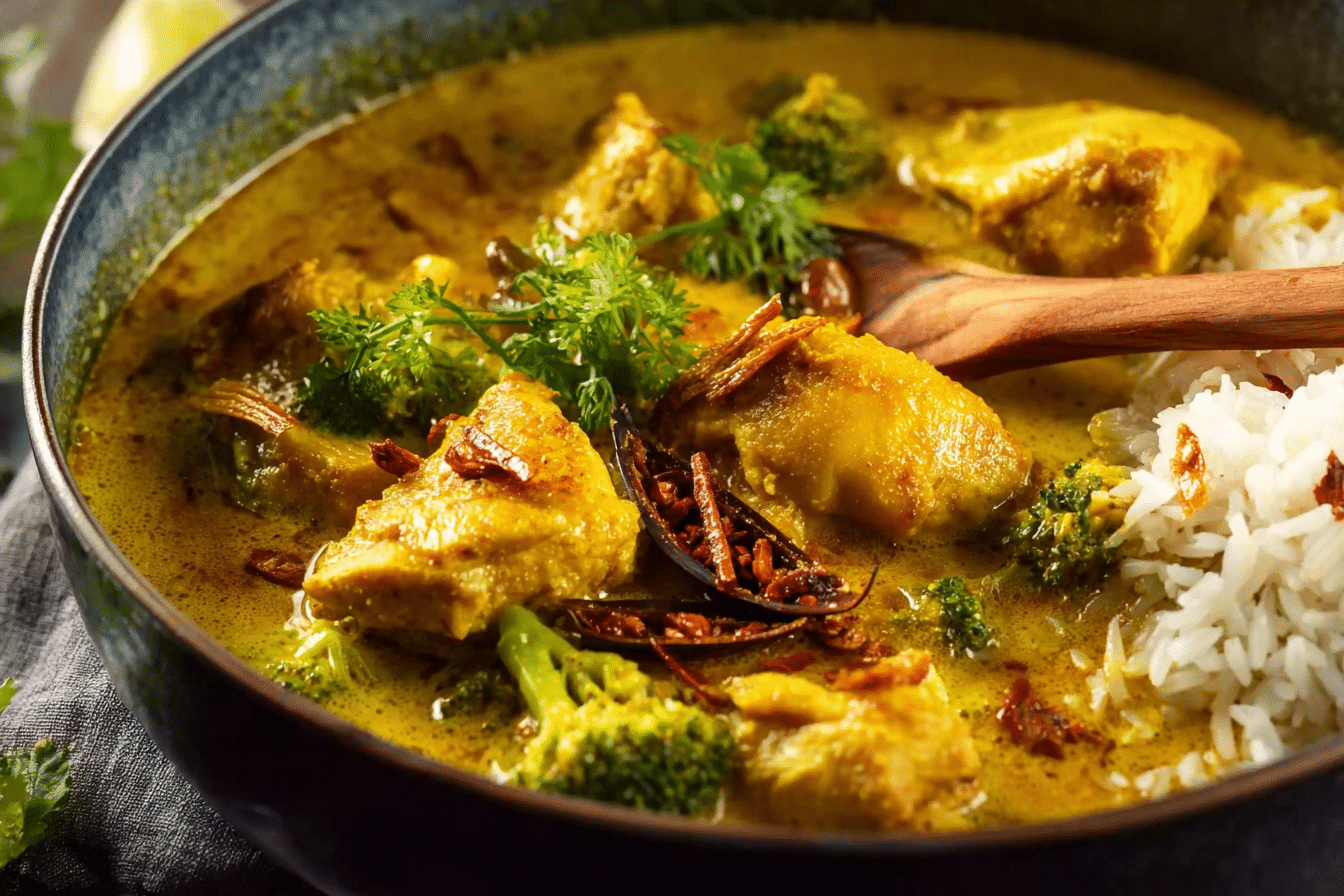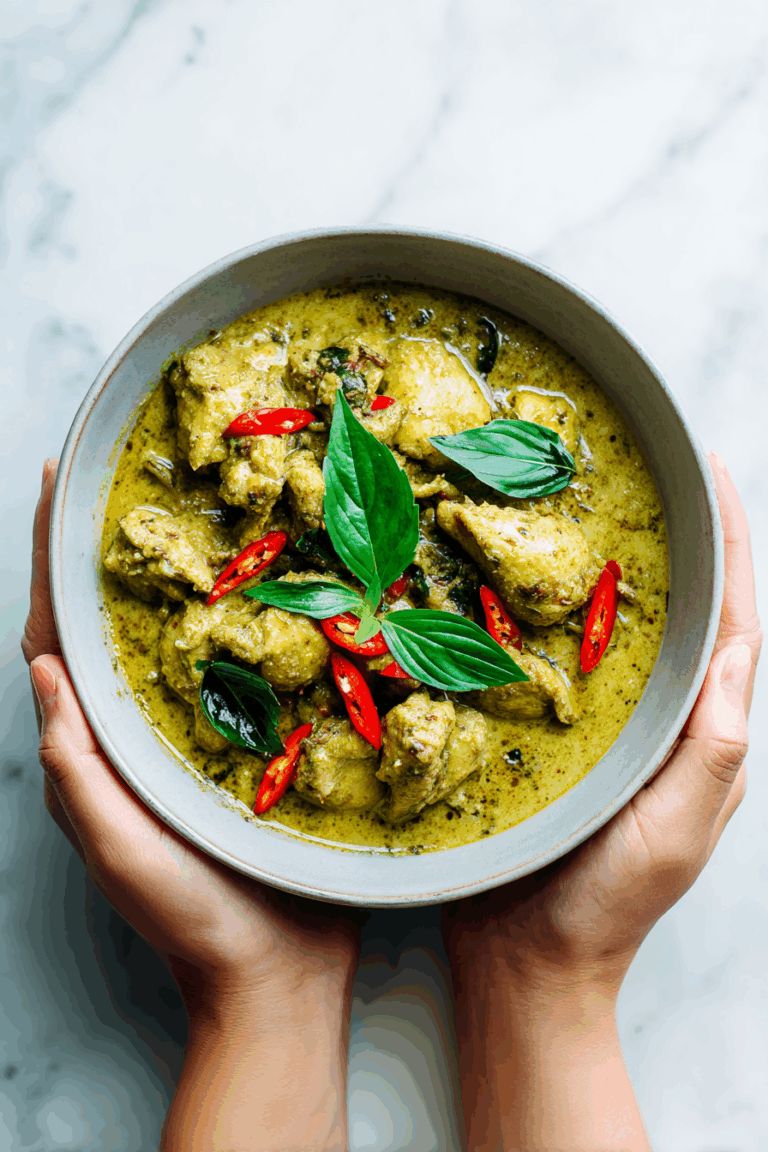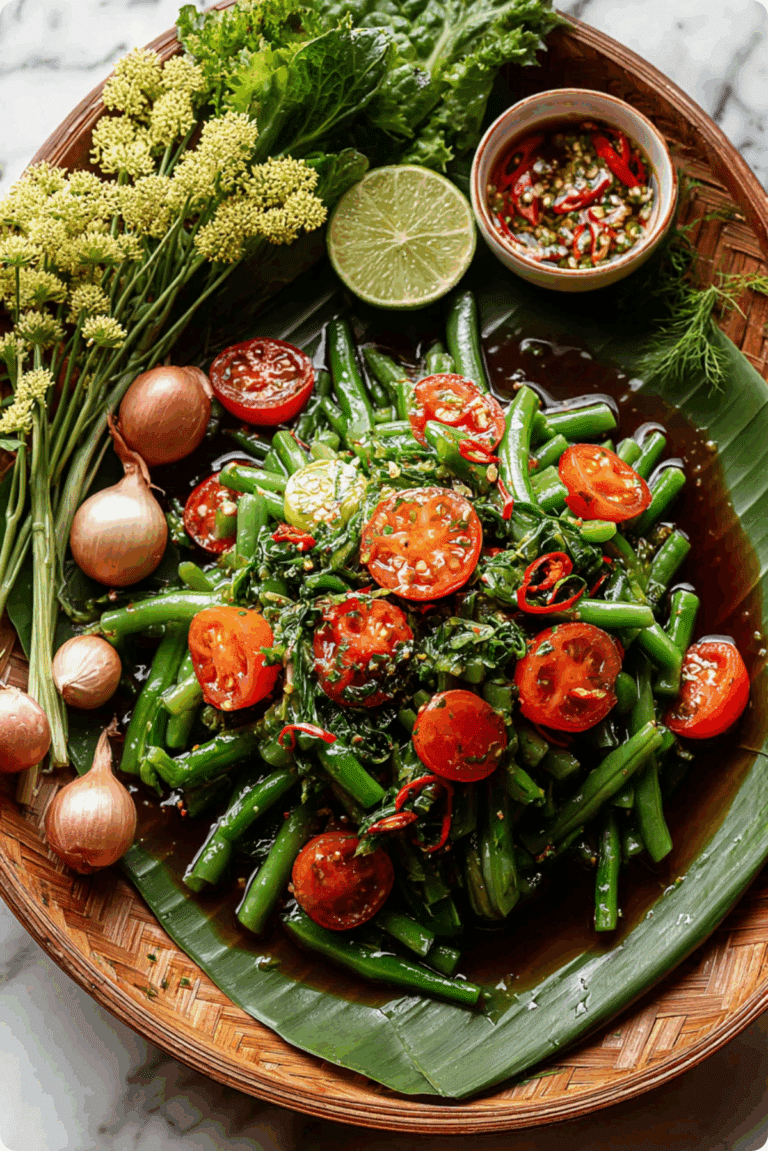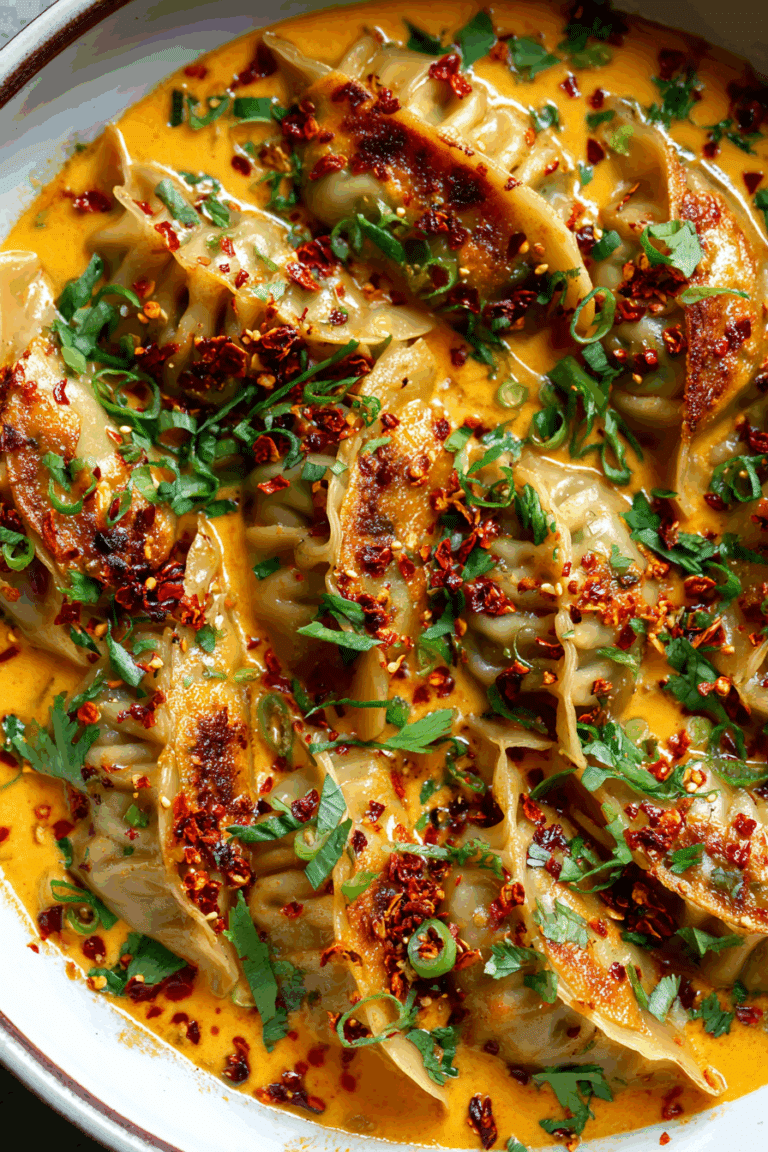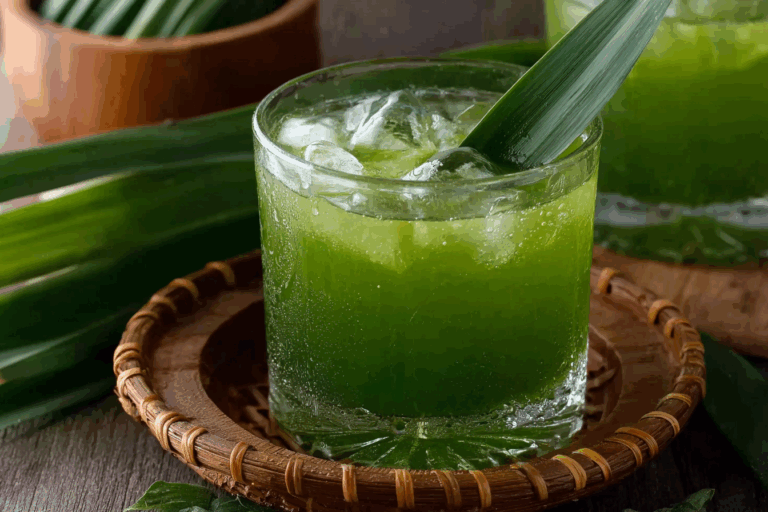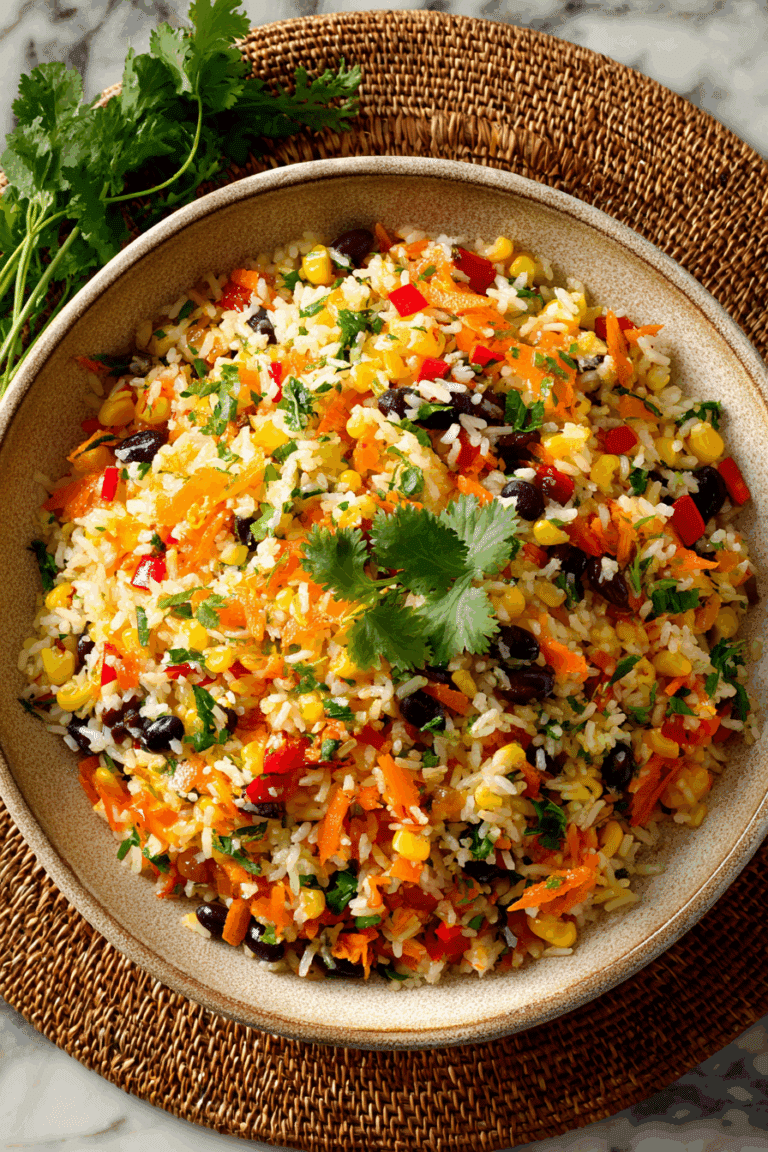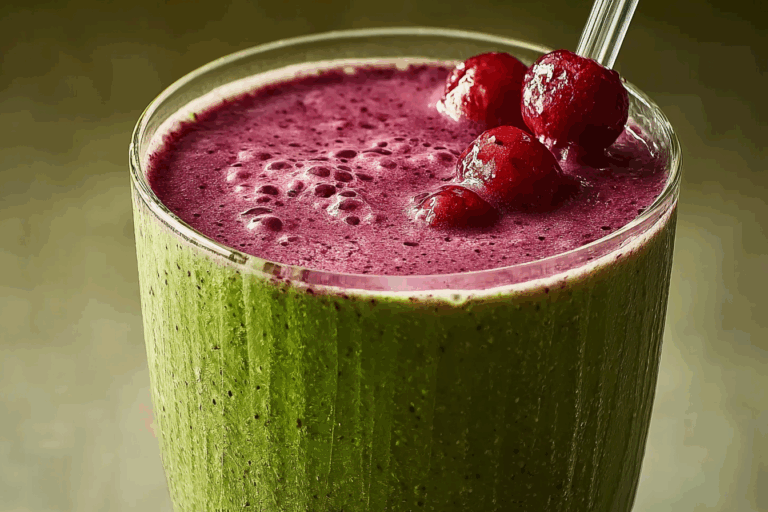Golden Coconut Chicken Curry: The Best Recipe You’ll Ever Try
Golden coconut chicken curry is not just a recipe; it’s a journey of flavors, memories, and traditions that have been passed down in my kitchen for years. When I first started Just Thai Recipes, I had one dream in mind: to share the kind of food that warms your soul and connects you back to home, no matter where you are in the world. On my About Page, I talk about how food became the heart of my storytelling. Recipes like this golden coconut chicken curry became the bridge between my Thai roots and the global kitchens of my readers.
The story behind golden coconut chicken curry goes back to my grandmother’s bustling kitchen. I remember sitting on a small wooden stool while she toasted star anise and cinnamon sticks in a heavy pot. The fragrance of warm spices blended with the rich coconut cream, and I knew even before the first bite that this dish was special. Years later, I’ve reimagined this curry with tender chicken thighs, fresh broccoli, and a golden glow from turmeric, but the essence of her cooking is still here.
If you’ve been looking for the best chicken curry recipe that combines the creaminess of Thai curries with the spice balance of Indian coconut chicken curry, then golden coconut chicken curry will become your new favorite. The rich coconut base, fragrant spice mix, and perfectly simmered chicken make this dish not only easy to cook but also deeply satisfying. In this article, you’ll learn how to prepare it step by step, master the tricks to get the sauce just right, discover cultural history, and even see how it stacks up against variations like chicken curry with coconut milk Jamie Oliver or South Indian chicken curry with coconut milk.
Table of Contents
Table of Contents
The Science of Curry Flavors
What makes curry so irresistible is the way different ingredients interact on a molecular level to create complex layers of taste. Every spoonful is a balance of sweetness, heat, richness, acidity, and umami. When you simmer spices like star anise, cinnamon, or cumin in hot oil, their essential oils are released. This process is called blooming, and it is what makes spices come alive in your cooking.
The presence of coconut cream or milk introduces a creamy fat that carries those spice molecules and coats the tongue, creating a sensation of richness that lingers. It is the same principle that makes butter or cream essential in French sauces. The fat in coconut cream acts as a vehicle for flavor, helping the aromatic compounds from garlic, ginger, and turmeric spread evenly throughout the sauce.
Another key aspect of curry is the Maillard reaction, which happens when onions and chicken are browned at the start. This reaction develops savory, almost caramel-like notes that form the foundation of depth in the sauce. Without this initial browning, the curry would taste flat. It is this layering of flavor, from the toasting of spices to the slow simmer of proteins, that builds the unique taste we all associate with curry.
Finally, balance is crucial. Too much salt will overwhelm the palate, while too little acidity will leave the dish feeling heavy. This is why a squeeze of lime or a touch of tamarind can transform the overall experience. A well-made curry should have a harmony of warmth from the spices, creaminess from the coconut base, sweetness from vegetables like onions, and brightness from herbs and citrus. The science may sound complex, but in practice it is simply about layering steps carefully and giving the dish time to develop.
Ingredients for Golden Coconut Chicken Curry
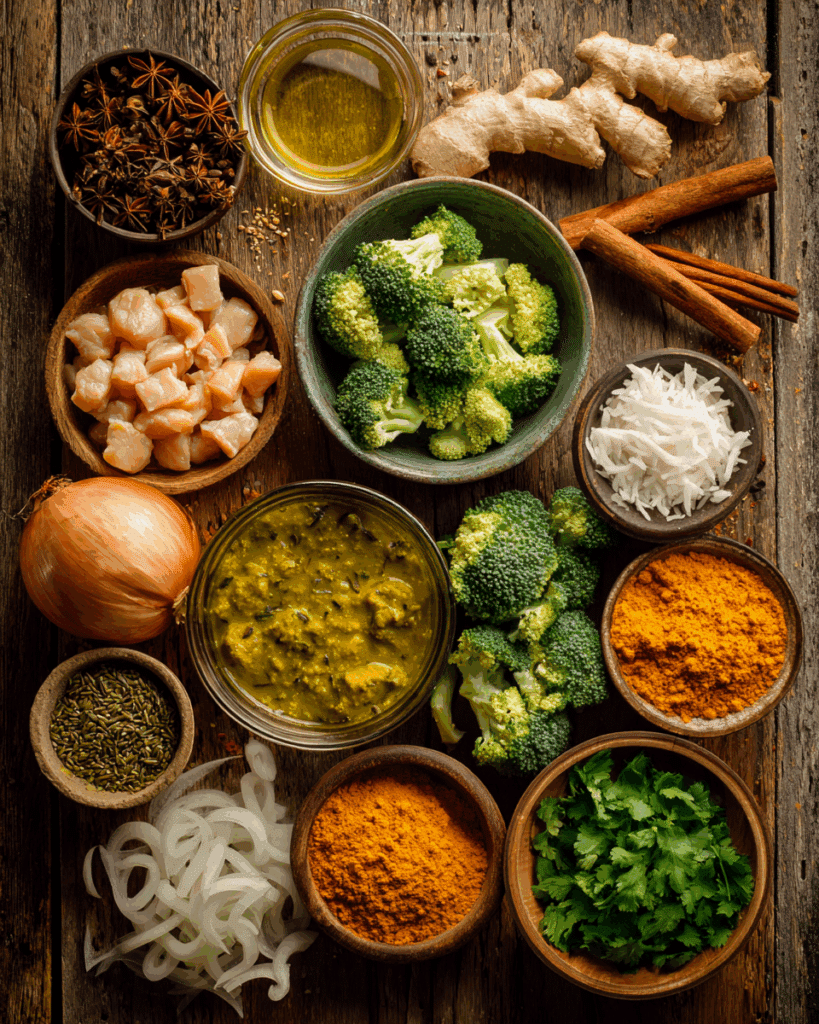
When it comes to making golden coconut chicken curry, the quality of your ingredients can truly transform the dish. To make sure you can recreate this recipe at home, I’ve listed both cups and metric measurements.
Main Ingredients
- 3 tbsp coconut oil (or vegetable/canola oil)
- 3 star anise
- 1 cinnamon stick
- 1 onion, finely diced
- 500g / 1lb chicken thigh fillets, cut into 1cm / ⅓-inch slices
- 1 tsp garlic, finely grated
- 1 tsp ginger, finely grated
- 3 tsp turmeric, finely grated (or 1½ tsp ground turmeric)
- 2 cups chicken stock/broth, low sodium
- 400g / 14 oz unsweetened coconut cream (sub: coconut milk)
- 1 large head broccoli, cut into florets (stems peeled and diced optional)
- 1 cup coriander (cilantro) leaves, lightly packed, plus extra for garnish
Spice Mix
- 1½ tsp kosher salt
- 1½ tsp garam masala
- 1½ tsp coriander powder
- ½ tsp cumin powder
- ½ tsp fennel powder (or extra garam masala)
For Serving
- Crispy fried shallots, store-bought
- Jasmine or basmati rice
Step-by-Step Instructions for Golden Coconut Chicken Curry
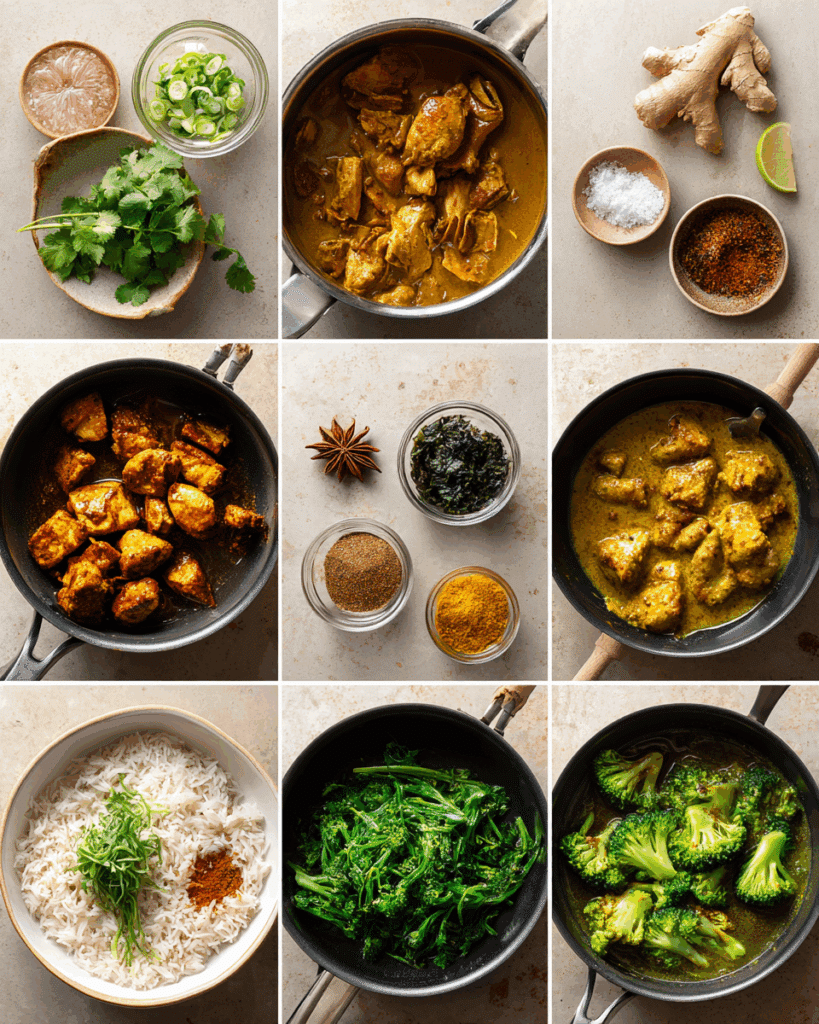
Cooking golden coconut chicken curry is easier than it looks. By breaking the process into clear steps, you’ll find yourself making it confidently and maybe even adding your own twist along the way.
- Prepare the spice mix – In a small bowl, combine the salt, garam masala, coriander, cumin, and fennel powder. Mixing this ahead of time ensures the flavors are evenly distributed when added to the pot.
- Toast the spices – Heat coconut oil in a heavy-based pot over medium-high heat. Drop in the star anise and cinnamon stick. Toast them for about 2 minutes until the aromas release, filling your kitchen with warmth. This step is essential in developing depth in your golden coconut chicken curry.
- Cook the onion – Add the finely diced onion to the pot. Cook for 2 minutes until softened and slightly golden. This creates the base sweetness for your curry sauce.
- Sear the chicken – Add the sliced chicken thighs, cooking for about 3 minutes until the outside is no longer pink. They’ll finish cooking in the sauce later.
- Add aromatics – Stir in grated garlic, ginger, and turmeric. Cook for 1 minute, letting their fragrance infuse into the oil. At this stage, your golden coconut chicken curry will start developing its signature golden color.
- Incorporate the spice mix – Sprinkle in your prepared spice blend and stir well for 30 seconds. The heat will bloom the spices, intensifying their flavor.
- Simmer the curry – Pour in the chicken stock and coconut cream. Stir, bring it to a lively simmer, and cook uncovered for 12 minutes. The sauce should thicken slightly while the chicken absorbs the flavors.
- Add broccoli – Toss in the broccoli florets, bringing the curry back to a simmer. Cook for another 3 minutes until tender but still vibrant green.
- Finish and serve – Let the curry cool for 5 minutes. This resting period helps the sauce achieve the perfect creamy consistency. Stir in fresh coriander leaves and serve with jasmine or basmati rice. Garnish with extra coriander and crispy shallots.
For another take on this recipe, you might want to explore the step-by-step guides available at RecipeTin Eats’ golden coconut chicken curry or this quick coconut chicken curry by Simple Home Edit. Both highlight the beauty of coconut-based curries and show just how versatile this dish can be.
Tips and Tricks for Perfect Golden Coconut Chicken Curry
Golden coconut chicken curry may sound exotic, but it’s very beginner-friendly if you follow a few insider tricks.
- Choose chicken thighs over breasts: Thighs are juicier and more forgiving. They don’t dry out as easily, making your golden coconut chicken curry rich and flavorful.
- Don’t skip toasting whole spices: Star anise and cinnamon add a warm, aromatic base. This step is small but makes a big difference in flavor depth.
- Use full-fat coconut cream: Low-fat options often split or produce a watery sauce. For that silky consistency, stick to full-fat coconut cream.
- Add vegetables at the right time: If you add broccoli too early, it becomes mushy. Add it just before serving to keep it tender-crisp.
- Let the curry rest before serving: Cooling for five minutes helps the sauce thicken naturally.
- Balance with acidity: A squeeze of lime juice at the end lifts the richness of the golden coconut chicken curry and makes the flavors pop.
- Batch cook for meal prep: This curry tastes even better the next day, so make extra portions.
Cooking is all about balance. By following these tricks, you’ll not only master golden coconut chicken curry but also gain confidence to tweak other curry recipes like Indian chicken curry recipe or even the best chicken curry recipe variations.
Variations of Golden Coconut Chicken Curry
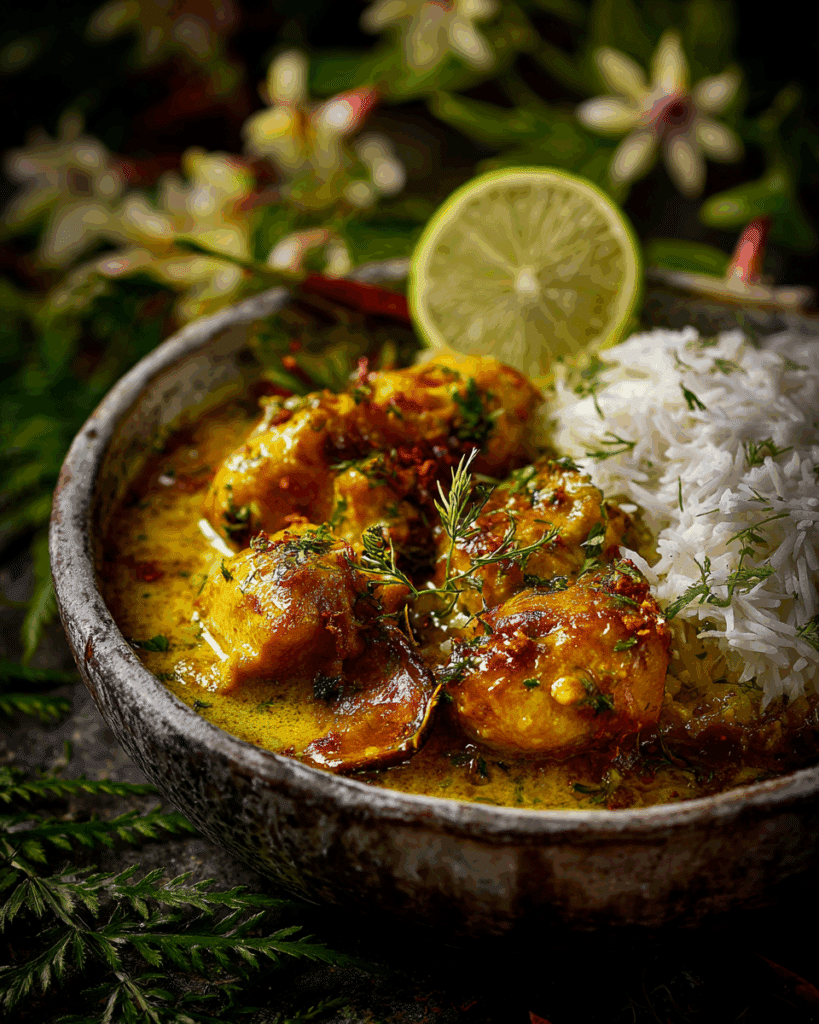
One of the best things about golden coconut chicken curry is how versatile it is. The base recipe is already rich, creamy, and full of flavor, but there are countless ways to adapt it depending on your preferences, the ingredients you have on hand, or even your mood. I often find myself making small changes each time I cook golden coconut chicken curry, and it always feels like a new experience even though it is the same comforting dish at its core.
The first variation I recommend is leaning into Indian flavors. To create an Indian coconut chicken curry, you can add curry leaves, extra cardamom pods, and a touch of chili powder. This creates a bolder spice profile and gives your golden coconut chicken curry a more complex aroma. I love serving this version with fluffy basmati rice and warm naan bread because it soaks up every bit of that luscious sauce.
Another fun option is inspired by Jamie Oliver’s take on chicken curry with coconut milk. If you want to keep things rustic and hearty, try adding fresh tomatoes, chunks of bell peppers, and a pinch of red chili flakes. This makes your golden coconut chicken curry feel more homey and vegetable-packed while still keeping the silky coconut base intact.
For a South Indian style chicken curry with coconut milk, add mustard seeds, curry leaves, and tamarind paste. This will make your golden coconut chicken curry tangy and aromatic with just the right balance of sourness to cut through the creamy coconut sauce. South Indian curries are often lighter in texture but vibrant in flavor, and this version brings a whole new dimension to the dish.
If you are short on time and need a simple chicken curry recipe, you can simplify golden coconut chicken curry by skipping the star anise and cinnamon. Use a ready-made garam masala mix, add coconut milk, and keep the cooking time shorter. It might not have the same depth as the full version, but it will still be a delicious and cozy dinner.
And finally, for those who are always looking for the best chicken curry recipe, you can slow simmer golden coconut chicken curry for 40 minutes instead of 12. This extended cooking time will concentrate the sauce and allow the chicken to absorb even more flavor. The result is a dish that feels luxurious and rich enough to serve at a special gathering.
Every variation of golden coconut chicken curry tells a slightly different story. Whether you choose Indian spices, Jamie Oliver’s rustic touch, a South Indian tang, or a simplified version for weeknights, this curry adapts beautifully. Once you master the base recipe, you will never run out of ways to enjoy golden coconut chicken curry at home.
Nutrition and Health Benefits of Golden Coconut Chicken Curry
Golden coconut chicken curry is not just a comforting meal, it also offers a wide range of nutritional benefits. Each ingredient brings something valuable to the table, making this curry not only delicious but also nourishing.
A typical serving of golden coconut chicken curry without rice has around 420 calories, which makes it filling yet balanced for a main dish. It contains about 28 grams of protein, which helps keep you full and supports muscle health. The fat content is around 28 grams, mostly coming from the coconut cream and the chicken thighs, but these are mostly healthy fats that the body can use for energy. Carbohydrates remain on the lower side at 14 grams, making golden coconut chicken curry a great option if you are trying to keep your meal balanced.
The health benefits of golden coconut chicken curry go beyond calories. Turmeric, one of the star ingredients, is well known for its anti-inflammatory properties. It is often called a superfood spice because it supports joint health and can even aid in digestion. The coconut cream in golden coconut chicken curry contains medium-chain triglycerides, also called MCTs, which are fats that are easier for the body to process and convert into quick energy.
Broccoli, which is often added to golden coconut chicken curry, provides fiber, vitamin C, and antioxidants. Fiber supports digestion, vitamin C strengthens the immune system, and antioxidants help protect the body against stress and damage. If you swap broccoli for cauliflower, bell peppers, or other vegetables, you will still be adding extra vitamins and minerals to your curry.
Chicken thighs are also an excellent source of protein. They are more flavorful than chicken breasts and contain more iron and zinc, which are important for energy and immunity. When simmered in coconut cream and spices, they become tender and juicy, making golden coconut chicken curry a satisfying yet wholesome meal.
If you are trying to make golden coconut chicken curry even healthier, there are easy adjustments you can make. Use less oil at the beginning, or use coconut milk instead of cream for a lighter sauce. You can also add extra vegetables to increase fiber and reduce the portion of rice if you want fewer carbohydrates. No matter how you adapt it, golden coconut chicken curry remains a dish that feels indulgent but still supports your health.
Make-Ahead, Storage, and Freezing Golden Coconut Chicken Curry
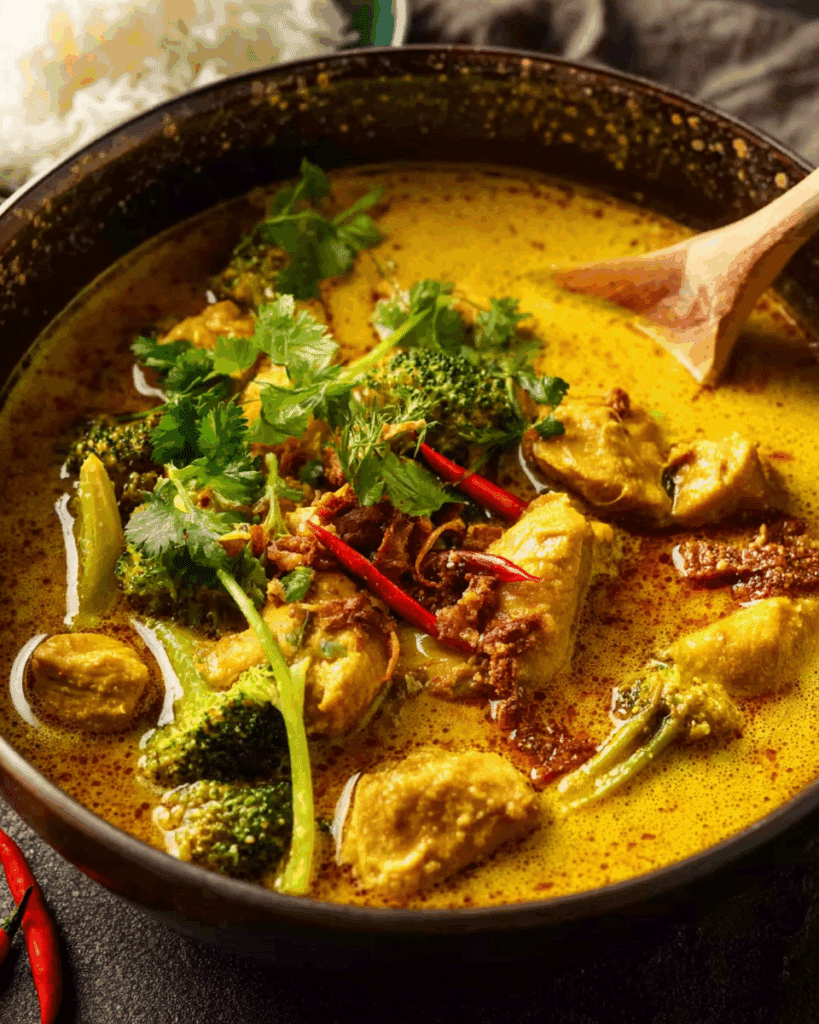
Golden coconut chicken curry is one of those recipes that actually tastes better the next day, which makes it perfect for meal prep. The spices deepen and the coconut cream becomes even more flavorful as it sits overnight. This is why I often cook a big batch of golden coconut chicken curry on the weekend, then enjoy it throughout the week.
If you want to make golden coconut chicken curry ahead of time, cook it fully as the recipe describes. Once it cools, store it in an airtight container in the refrigerator. It will last up to four days without losing flavor. When reheating, simply warm it over low heat on the stove. If the sauce has thickened too much, add a splash of chicken stock or water to loosen it up.
Golden coconut chicken curry also freezes beautifully. To freeze, portion the curry into freezer-safe containers, leaving a little space at the top because the sauce expands as it freezes. It will keep well for up to two months. To reheat, thaw it overnight in the refrigerator, then warm it on the stove. Again, add a little stock or water if the sauce seems too thick.
If you want to meal prep golden coconut chicken curry, consider storing it in individual portions with rice included. This way you can grab a complete meal from the fridge or freezer. It is also a fantastic option for lunch boxes because the flavors are even better the next day.
The ability to store and reheat golden coconut chicken curry without losing quality is what makes it such a reliable dish. Whether you are cooking for a family dinner, planning a week of meals, or stocking your freezer, golden coconut chicken curry adapts perfectly.
Common Mistakes to Avoid When Cooking Golden Coconut Chicken Curry
Even though golden coconut chicken curry is a forgiving dish, there are a few common mistakes that can affect the final result. Luckily, once you know what to watch for, these mistakes are easy to avoid.
The first mistake is using low-fat coconut milk. Golden coconut chicken curry relies on the richness of full-fat coconut cream or coconut milk to create a silky sauce. Low-fat versions often separate during cooking and leave you with a watery texture instead of the luxurious consistency you want. Always choose full-fat for the best results.
Another mistake is overcooking the broccoli or other vegetables. If you add them too early, they lose their bright color and become mushy. The key to a great golden coconut chicken curry is adding the vegetables near the end so they remain tender and vibrant.
Skipping the toasting of whole spices is another error many beginners make. Toasting star anise and cinnamon may seem like a small step, but it releases essential oils that create the foundation of the curry’s flavor. If you skip this, your golden coconut chicken curry will taste flat and less aromatic.
A fourth mistake is stirring too much while the curry simmers. Golden coconut chicken curry thickens best when left to simmer undisturbed, so resist the urge to stir constantly. Let the sauce reduce naturally and you will end up with a richer curry.
Lastly, some people add too much salt without considering the sodium in store-bought chicken stock. This can make the curry overly salty. Always taste as you go, and adjust carefully at the end.
Avoiding these mistakes ensures that your golden coconut chicken curry will come out creamy, flavorful, and beautifully balanced every time.
Cultural and Historical Background of Golden Coconut Chicken Curry
Golden coconut chicken curry carries with it a history that is both rich and layered, much like its flavor. When I cook golden coconut chicken curry, I often think about how it reflects a meeting point between Thai and Indian culinary traditions. In Thailand, coconut milk and coconut cream are cornerstones of curry dishes, while in India, spices like turmeric, garam masala, and coriander powder are the building blocks of curry culture. Golden coconut chicken curry borrows from both worlds and creates a dish that feels familiar yet unique.
The use of turmeric is one of the most defining aspects of golden coconut chicken curry. Turmeric is not only responsible for the warm golden color but has also been valued for centuries as both a culinary spice and a medicinal ingredient. In Indian culture, turmeric is often associated with prosperity and healing, while in Thai cooking, turmeric adds brightness and balance to creamy coconut-based dishes. Golden coconut chicken curry embraces this spice as its heart, combining both tradition and health benefits in every spoonful.
Coconut cream is another vital component with cultural significance. In Thai cuisine, coconut cream is used to soften the intensity of chili and spices, making the dish smooth and comforting. When paired with the spice blends that are more Indian in nature, golden coconut chicken curry becomes a fusion of flavors that feels both traditional and modern. It is no wonder that golden coconut chicken curry has become popular across the globe because it connects the comforting nature of home cooking with the excitement of international flavor.
Historically, curry itself has been a dish of adaptation. Traders brought spices across Asia, and cooks adapted them to the ingredients they had available. Golden coconut chicken curry is a reflection of that same process, a blending of techniques and ingredients that results in something timeless. Every time I cook golden coconut chicken curry, I feel like I am carrying forward centuries of culinary exchange, keeping alive a tradition of creativity and sharing.
Serving Suggestions for Golden Coconut Chicken Curry
The beauty of golden coconut chicken curry is how easily it pairs with different sides and accompaniments. The most traditional option is jasmine rice or basmati rice, both of which soak up the creamy coconut sauce perfectly. The subtle fragrance of jasmine rice complements the spices beautifully, while basmati rice adds a slightly nutty flavor that enhances the richness of golden coconut chicken curry.
If you want to go beyond the basics, you can serve golden coconut chicken curry with naan bread or roti. These breads are excellent for scooping up the curry and make the meal feel even more satisfying. I often like to pair golden coconut chicken curry with a simple cucumber salad dressed with lime and fish sauce, because the fresh crunch of the cucumbers balances the creaminess of the curry.
Golden coconut chicken curry also works well in modern variations. Try serving it over quinoa or cauliflower rice if you want a lighter option. You can even pair golden coconut chicken curry with roasted sweet potatoes or a side of steamed greens for a healthier twist. For parties, I sometimes serve golden coconut chicken curry in small bowls with crispy fried shallots sprinkled on top. It becomes an appetizer that always gets people talking.
Another idea is to pair golden coconut chicken curry with a cold drink. A glass of iced Thai tea or a refreshing coconut water makes the perfect contrast to the warm spices. For those who enjoy wine pairings, a light Riesling or Sauvignon Blanc can cut through the richness of golden coconut chicken curry and bring out its layered flavors.
Serving golden coconut chicken curry is as much about presentation as it is about taste. Garnish generously with fresh coriander leaves, scatter some crispy shallots, and maybe even add a squeeze of lime at the table. This transforms golden coconut chicken curry from a simple dinner into a dish that feels truly special.
When people search for golden coconut chicken curry, they are often looking for similar dishes that capture the same comfort and flavor. Popular searches include Indian coconut chicken curry, chicken curry with coconut milk Jamie Oliver, South Indian chicken curry with coconut milk, Indian chicken curry recipe, simple chicken curry recipe, and even the best chicken curry recipe. Each of these recipes connects back to golden coconut chicken curry in different ways.
For example, Indian coconut chicken curry tends to be spicier and uses more whole spices like cardamom and cloves, while golden coconut chicken curry focuses on turmeric and coconut cream for its golden hue and smooth texture. Chicken curry with coconut milk Jamie Oliver is often rustic and approachable, using everyday pantry ingredients, while golden coconut chicken curry leans into traditional spice balances that create depth.
South Indian chicken curry with coconut milk brings in tamarind and curry leaves, adding tang and fragrance that set it apart. Still, the creamy base makes it feel related to golden coconut chicken curry. Even when people are searching for a simple chicken curry recipe or the best chicken curry recipe, what they are often seeking is a dish that feels easy yet satisfying, which golden coconut chicken curry delivers in abundance.
Golden coconut chicken curry continues to appear alongside these search terms because it embodies what so many cooks want. It is flavorful without being overwhelming, it is easy to adapt, and it always feels like comfort food. The next time you find yourself searching for one of these recipes, remember that golden coconut chicken curry offers the best of all worlds, combining creamy richness, vibrant color, and aromatic spice into one unforgettable dish.
Cooking Tools and Kitchen Tips for Making Curries
When preparing a curry, the tools you use can make the process smoother and even improve the final flavor. While you do not need a professional kitchen setup, having a few reliable essentials on hand will make your cooking experience more enjoyable.
The first and most important tool is a heavy-bottomed pot or Dutch oven. Curries need steady heat and even cooking, and thin pans often create hot spots that can burn spices or make sauces stick. A cast iron Dutch oven or a sturdy stainless steel pot distributes heat evenly, allowing the flavors to develop slowly and deeply.
A good knife is another must-have item. Since curries often involve a lot of chopping, from onions to fresh herbs, a sharp chef’s knife saves time and ensures even cuts. This is especially important when cutting proteins or vegetables into uniform pieces, so they cook evenly and look appealing when served.
Measuring spoons and cups might seem obvious, but they are essential for balancing spices. Curry is all about ratios, and a little too much cumin or too little turmeric can shift the entire flavor profile. While experienced cooks sometimes add spices by instinct, precise measurements are especially helpful if you are learning or want consistent results every time.
A mortar and pestle or a spice grinder can also elevate your curry. Grinding whole spices just before cooking unlocks their essential oils and gives you a stronger aroma than pre-ground powders. Even something as simple as freshly ground coriander or fennel seeds can make your dish taste brighter and more authentic.
For blending, an immersion blender can be useful if you want a smoother sauce. Some curries benefit from a velvety consistency, and blending part of the sauce before adding protein or vegetables can create that restaurant-style finish.
Small tools like wooden spoons, ladles, and tongs also come in handy. Wooden spoons are gentle on pots and do not scratch the surface, while ladles make it easier to serve generous portions of sauce. Tongs are excellent for handling pieces of meat during the searing step without splattering.
Finally, storage containers should not be overlooked. Curries often taste better the next day, so airtight containers that can go from fridge to freezer are essential. Investing in glass containers with secure lids helps keep flavors fresh and allows you to reheat without worrying about chemicals from plastic.
Cooking curry is as much about technique as it is about tools. With the right equipment, every step becomes easier, from toasting spices to simmering sauces. Having these tools ready not only improves your efficiency but also helps you focus on what matters most: enjoying the process of cooking and sharing a delicious meal.
Side Dishes and Perfect Pairings
A curry is always the star of the table, but the supporting sides are what complete the meal. Choosing the right accompaniments can elevate the experience and make the flavors stand out even more.
Rice is the most common partner for curries, and the type of rice you choose matters. Jasmine rice, with its delicate fragrance, enhances light, creamy curries, while basmati rice offers a nuttier character that works beautifully with stronger spice blends. For a healthier choice, you can try brown rice or even quinoa, which absorb sauces just as well while adding extra fiber.
Bread is another classic pairing. Freshly baked naan, roti, or paratha provides the perfect vehicle for scooping up every last bit of sauce. The chewy texture of bread contrasts with the silky consistency of curry and creates a satisfying bite. If you prefer something crisp, papadums add a crunchy contrast that livens up the meal.
Vegetable sides are also important. A fresh cucumber salad with lime dressing or a lightly pickled carrot slaw provides brightness that cuts through the richness. Roasted vegetables such as cauliflower, sweet potatoes, or green beans bring earthy sweetness to the table, balancing the spices beautifully.
Do not forget about beverages. A cold Thai iced tea, with its sweet creaminess, balances heat perfectly, while coconut water offers a refreshing and hydrating option. For those who enjoy wine, a slightly off-dry Riesling or a sparkling white works wonders alongside spicy dishes because the subtle sweetness and bubbles cleanse the palate between bites.
Dessert can also play a role in rounding off the meal. A simple bowl of fresh mango or sticky rice pudding with coconut milk creates a satisfying end to a curry dinner without feeling too heavy. The light sweetness helps calm the spices and leaves you refreshed.
The right pairings ensure that curry is not just one dish on the table but part of a complete and memorable dining experience.
Conclusion
Golden coconut chicken curry is more than just a recipe, it is an experience that connects cultures, traditions, and memories. From the fragrant spices toasted at the beginning to the creamy coconut sauce that thickens as it simmers, every step of making golden coconut chicken curry is both rewarding and comforting. It is the kind of dish that feels at home on a weeknight dinner table but also impressive enough to serve at a special gathering.
In this article, we explored not only how to cook golden coconut chicken curry but also how to adapt it into variations like Indian coconut chicken curry, chicken curry with coconut milk Jamie Oliver, or South Indian chicken curry with coconut milk. We talked about the health benefits of ingredients like turmeric, coconut cream, and broccoli, as well as tips for storage and reheating. We even touched on the cultural background of golden coconut chicken curry, which shows how food travels and evolves.
The next time you are looking for the best chicken curry recipe, I encourage you to give golden coconut chicken curry a try. It is creamy, golden, and packed with flavor. It is a dish that will make your kitchen smell incredible and your family ask for seconds. Cooking golden coconut chicken curry is not just about following a recipe, it is about creating something that feels warm and joyful, a dish you will want to return to again and again.
So go ahead, gather your ingredients, toast your spices, and bring the golden glow of turmeric and coconut cream into your kitchen. Once you taste golden coconut chicken curry, you will understand why it has become one of the most beloved dishes in my kitchen and why it will soon be a favorite in yours too.
FAQ
Can golden coconut chicken curry be made as a vegetarian dish?
Yes, absolutely. Instead of chicken, you can use tofu, chickpeas, or even paneer. The sauce of golden coconut chicken curry is so flavorful that it pairs beautifully with vegetarian protein options.
What makes golden coconut chicken curry different from a traditional Indian chicken curry recipe?
Golden coconut chicken curry is creamier and relies heavily on coconut cream and turmeric for flavor and color. Traditional Indian chicken curry recipes often use tomatoes, onions, and yogurt as their base. Both are delicious, but golden coconut chicken curry has a unique golden color and a silky sauce.
How can I make golden coconut chicken curry spicier?
If you want more heat in your golden coconut chicken curry, add fresh chilies, cayenne pepper, or a pinch of chili powder during the spice mix step. You can also serve it with chili flakes on the side so everyone can adjust the heat level.
Can I substitute coconut cream with coconut milk when making golden coconut chicken curry?
Yes, you can use coconut milk instead of coconut cream. Coconut cream makes the sauce thicker and richer, while coconut milk creates a lighter version of golden coconut chicken curry. Both are delicious, so it depends on your preference.
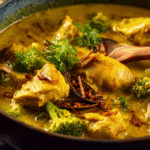
Golden Coconut Chicken Curry
- Prep Time: 15 minutes
- Cook Time: 25 minutes
- Total Time: 40 minutes
- Yield: 4 servings 1x
- Category: Main Course
- Method: Stovetop
- Cuisine: Thai-Indian Fusion
- Diet: Halal
Description
A creamy and aromatic curry made with chicken thighs, coconut cream, turmeric, and spices, served with rice and garnished with coriander and crispy shallots.
Ingredients
- 3 tbsp coconut oil (or vegetable/canola oil)
- 3 star anise
- 1 cinnamon stick
- 1 onion, finely diced
- 500g / 1lb chicken thigh fillets, cut into 1cm slices
- 1 tsp garlic, finely grated
- 1 tsp ginger, finely grated
- 3 tsp turmeric, finely grated (or 1 1/2 tsp powder)
- 2 cups chicken stock/broth, low sodium
- 400g / 14 oz unsweetened coconut cream (or coconut milk)
- 1 large head broccoli, florets cut small (peel & dice stem optional)
- 1 cup coriander (cilantro) leaves, lightly packed, plus extra for garnish
- 1 1/2 tsp kosher salt
- 1 1/2 tsp garam masala
- 1 1/2 tsp coriander powder
- 1/2 tsp cumin powder
- 1/2 tsp fennel powder (or extra garam masala)
- Crispy fried shallots, for garnish
- Rice – jasmine or basmati recommended
Instructions
- Mix the salt, garam masala, coriander powder, cumin powder, and fennel powder in a small bowl to create the spice mix.
- Heat coconut oil in a large heavy-based pot over medium-high heat. Add star anise and cinnamon stick, toasting for 2 minutes.
- Add diced onion and cook for 2 minutes until softened.
- Add sliced chicken thighs and cook for 3 minutes until no longer pink on the outside.
- Stir in grated garlic, ginger, and turmeric. Cook for 1 minute.
- Add the spice mix and stir for 30 seconds to release the aroma.
- Pour in chicken stock and coconut cream. Stir, bring to a lively simmer, and cook uncovered for 12 minutes to allow the sauce to thicken.
- Add broccoli florets and simmer for 3 minutes until tender but still bright.
- Remove from heat and let cool for 5 minutes. Stir in fresh coriander, garnish with crispy shallots, and serve with rice.
Notes
- Use chicken thighs instead of breasts for juicier meat.
- Substitute coconut cream with coconut milk for a lighter sauce.
- Fennel powder can be replaced with more garam masala.
- Do not overcook broccoli; add it near the end for the best texture.
- Curry thickens more as it rests, so allow 5 minutes before serving.
Nutrition
- Serving Size: 1 bowl (without rice)
- Calories: 420
- Sugar: 5g
- Sodium: 720mg
- Fat: 28g
- Saturated Fat: 18g
- Unsaturated Fat: 8g
- Trans Fat: 0g
- Carbohydrates: 14g
- Fiber: 4g
- Protein: 28g
- Cholesterol: 95mg
Keywords: coconut chicken curry, turmeric chicken curry, creamy curry recipe, Thai chicken curry, Indian chicken curry fusion

